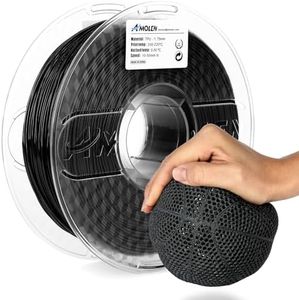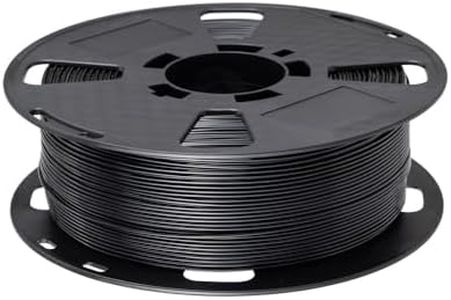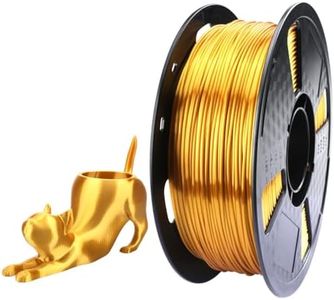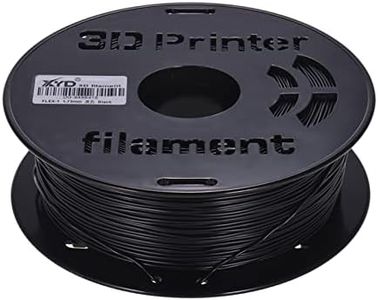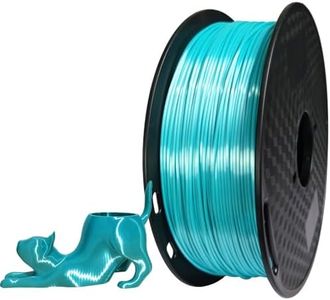We Use CookiesWe use cookies to enhance the security, performance,
functionality and for analytical and promotional activities. By continuing to browse this site you
are agreeing to our privacy policy
10 Best Flexible Filament
From leading brands and best sellers available on the web.By clicking on a link to a third party's website, log data is shared with that third party.
Buying Guide for the Best Flexible Filament
Shopping for flexible filament can be a little different from picking regular 3D printing filament. Flexible filaments are loved for their ability to bend, stretch, and compress, making them ideal for items like phone cases, rubber feet, or wearables. To make sure you choose the best flexible filament for your projects, you need to look at a few important features. Understanding what these mean and how they fit your needs will help you avoid surprises and get great results with your prints.Shore HardnessShore hardness is a measure of how soft or hard the flexible filament is. It's important because it determines how squishy or stiff your finished object will be. The scale usually ranges from around 85A (very soft and stretchy, almost rubber-like) to 98A or higher (firmer, more like a car tire). You should consider what your project needs: a soft Shore hardness (lower number) is good for highly flexible, stretchy prints like wristbands or seals, while a higher Shore hardness (higher number) is better for items that need to hold their shape better, like flexible gears or phone cases. Think about how much bend and squish you want and pick accordingly.
Elasticity (Elongation at Break)Elasticity, often called elongation at break, tells you how much the filament can stretch before it breaks. This matters because it affects how strong and flexible your prints are. Filaments with high elongation at break can stretch a lot before snapping, making them good for parts that are regularly bent or handled. If you need a really stretchy part, look for higher values; if you just need a bend without much stretch, a lower value is acceptable. Match this property to how much flexibility or toughness your printed part should have.
Printability (Ease of Printing)Printability is about how easy it is to use the filament with your 3D printer. Flexible filaments can be challenging because they tend to jam or tangle more easily. Some flexible filaments are designed to be easier to print, especially on common home printers, while others might require a direct drive extruder or slower print speeds. If you're new to flexible filaments or have a basic printer, look for options labeled as 'easy-to-print.' If you have experience or specialized equipment, you can try more advanced or super-soft materials.
Diameter ConsistencyDiameter consistency refers to how much the thickness of the filament stays the same throughout the spool. This is important because uneven filaments can cause clogs, uneven extrusion, or rough finishes on your prints. Make sure to select filaments known for good diameter consistency, as this makes printing smoother and your results more reliable. If you print detailed parts or require high precision, prioritize filaments that are praised for their consistent diameter.
Chemical ResistanceChemical resistance is how well the flexible filament can withstand exposure to oils, fuels, solvents, or other chemicals. This is important when printing parts that will be used in environments where they might come into contact with such substances, for instance, automotive or industrial applications. If your print needs to handle chemicals, look for filaments specifically noted for their resistance; for standard household items, this spec may be less critical.
Adhesion (Bed and Layer Bonding)Adhesion covers how well the filament sticks to the print bed and how well each layer bonds to the next. Good adhesion helps you avoid warping and ensures your print stays together. Some flexible filaments need specific bed surfaces or adhesives to stick well. If you experience prints that peel off the bed or layers that separate, you’ll want to pay close attention to this characteristic. Choose filaments known for good adhesion if you plan to print large or complex objects.


